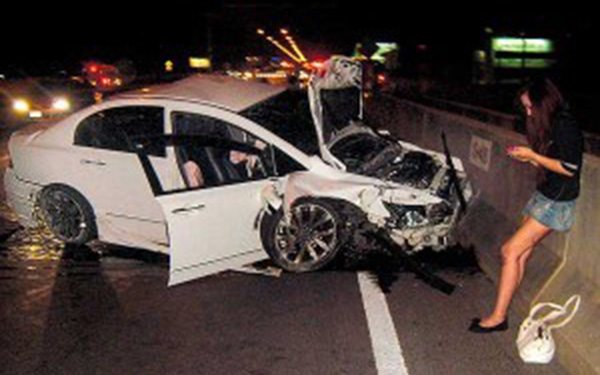If you’ve glanced even the smallest snippet of the English language Thai media over the past week or so, it’s likely that you’ll have seen the term “The Seven Dangerous Days Of Driving”.
Every year between the 27th of December and the 2nd of January, there is a sharp incline in the number of crashes and road deaths on Thailand’s already perilous roads. This is generally attributed to a rise in drink-driving during the holiday period and an increase of cars and drivers on the roads as people travel upcountry for the New Year holidays.
The first four days of this year’s ‘Seven Dangerous Days’ have reportedly seen 250 deaths from the almost 2,500 road crashes, according to the Bangkok Post.
This is appalling.
But, there’s something else that gets my goat about this – irresponsible journalism.
By designating a week of the year where it’s expected and accepted that more people will be hurt and injured in road crashes than the rest of the year, we are legitimising a week of dangerous driving.
We’ve even given it a bloody name.
In such a culture as Thailand, where a high degree of reasoning is placed on fate and auspices, it’s dangerous to lay the blame for such avoidable tragedies on simply ‘Seven Days Of Dangerous Driving’.

Headline from The Bangkok Post
–Your aunt died in a road smash? Well, it was Day 3 of the 7 Dangerous Days, I suppose.
–Your brother’s paralysed? What did he expect – it’s the 7 Dangerous Days!
I’m not suggesting that we stop reporting on the road atrocities or even that we don’t bring attention to the increase in crashes and fatalities over certain periods.
But we have to stop advertising the ‘Seven Dangerous Days’.
Days 1-5 of 7 Dangerous Days on #Thailand's Roads: 292 dead & 2,855 injured in 2,753 accidents
ตาย 292
เจ็บ 2,855
อุบัติเหตุ 2,753— Richard Barrow (@RichardBarrow) January 3, 2016
A huge number of other countries in Asia and beyond will see an increase in road accidents over this period, for exactly the same reasons as Thailand – drink driving and an increase in people on the roads.
No other country will be reporting such tragedy in such a gimmicky manner as Thailand. They will cite figures and percentage increases, there will be outrage, and there may be campaigns to improve the situation spearheaded by affected individuals.
Not in Thailand.
In Thailand, the tragedies will become statistics and will be filed under Day X of The 7 Dangerous Days. There’s no outrage – because everyone knows and expects more people to die on the roads this week than any other week – and there’s no campaigning because this is just ‘something that happens’ every year. The deaths and injuries are simply placed in the psychological box of Seven Dangerous Days 2015 and filed away.
Happy New Year, you’re dead. 75 more deaths take #Thailand NY road death toll to 253 w/ 2,412 hurt, 2,338 wrecks thru 4 of 7 Dangerous Days — Bob James (@NotThatBobJames) January 2, 2016
Once the Seven Dangerous Days are over, things will go back to normal. Of course, in Thailand, that’s just back to around 80 road deaths every day. But these will generally be reported with responsibility and appropriate weight.
Until Songkran is upon us. And then there’s another highly touted Seven Dangerous Days, with death statistics frantically spewed out by wannabe journos on Twitter as various media outlets engage in a competitive circle jerk of who can get the most up-to-date crash rate.
Journalists are an easy target to levy criticism at. I know that blame should be laid at the drink drivers, the speeding motorists and the simply crap, and I know that change should come from government policy and public campaigning. Only by tackling the core issues can we start to heal Bangkok’s roads.
But in the meantime, let’s report responsibly. Let’s do away with the Seven Dangerous Days and stop legitimising them. Let’s lay the blame at the people and issues actually responsible rather than at what time of the year it is.
See you for Episode II: Songkran…
Featured image is via Khon Kaen Retirement


